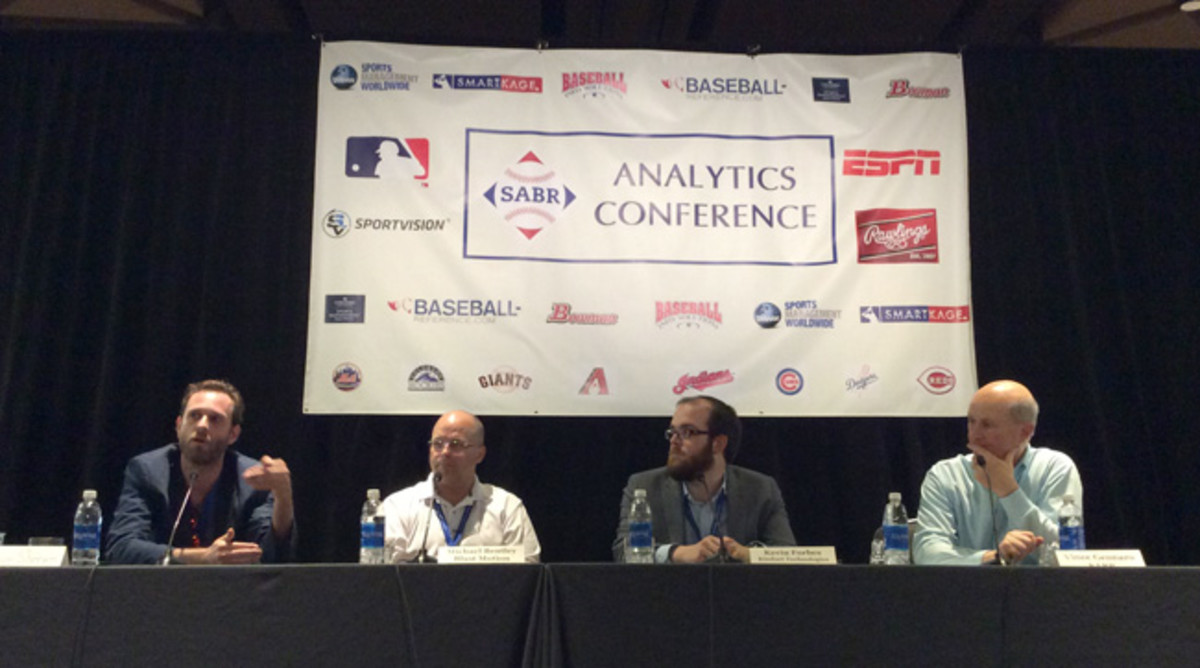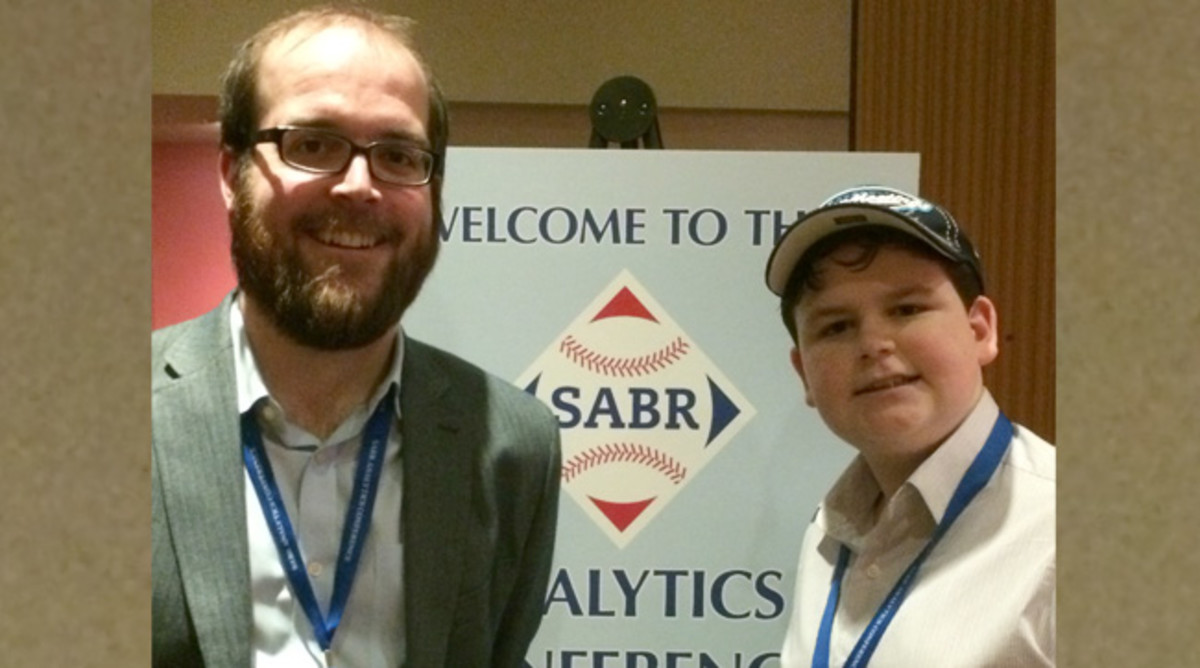2016 SABR Analytics Conference Day 2: Tech Focused


The 5th Annual SABR Analytics Conference continued Friday in Phoenix, with more one-on-one interviews, panels, and research presentations. But one highlight of the day was a panel that focused on new technology helping players improve performance.
The panel was moderated by SABR president Vince Gennaro and comprised of people who work in the tech world and represent a number of different areas of research:
Kevin Forbes is a Product Specialist for Kinduct Technologies Inc. He researches how the human brain and body reacts, and then applies it to sports. Jason Sherwin is the co-founder of DeCervo, a company that focuses on how quickly the brain reacts to different plays in sports. And Michael Bentley is the co-founder of Blast Motion, a company that makes sensors that are attached to equipment and give players data on their performance.
During the panel, each speaker shared their experiences working with technology and what they think the potential of new tech holds for players, teams, and sports.
Bentley has seen major advancements on the hardware side, even in the few years that Blast Motion has been around. When he started the company, its sensors were the size of a GoPro camera. Today, they’re smaller than a quarter and when placed on a bat can detect six degrees of motion.
He added that developing new technology like bat sensors changes how players learn and improve. It's important not to verbally give players tips, he said. Instead, they should be shown film of how they can improve. "The better we coach, the less we say... The slower we get them that information, the slower they learn."
Sherwin agreed. He also sees technology changing how players prepare. The example he gave was players will soon watch a video or simulate an at-bat of a pitcher they will be facing that day instead of reading a scouting report. He went on to say that in an anonymous survey taken among minor leagues, nearly eight of 10 players said they would want to use that kind of technology if it was available to them.

Technology can also help players come back to the game. Forbes said that Kinduct Technologies helped Blue Jays pitcher Marcus Stroman return from a potential season-ending injury in 2015. Stroman tore his ACL in spring training and was expected to miss every game. But he was back in action in September, thanks in part to data provided by Kinduct that informed him when he should be practicing and whether it was too much or too little.
The panelists all thought the future of baseball (and all sports) is in technology. But they also said players need to be better informed about the benefits of these new tools.
Bentley said that one setback is that the players have all these sensors and trackers on them, but often both they and the team have no idea why. The sensors can also be incredibly clunky, heavy, and distracting, so if the player and team don't know how to apply the data, there's no reason to keep wearing the equipment if it is just holding the player and team back.
I spoke to Forbes after the panel, and asked him why he feels so few players are using all this information and technology we are giving them:
The conversation about the future of technology in baseball was fascinating. And it wasn't the only interesting part of the second day of the conference. Here are some other highlights:
- FOX Sports’ Ken Rosenthal moderated a one-on-one conversation with Arizona Diamondbacks President and CEO Derrick Hall. Hall discussed the process leading up to the Diamondbacks' surprising signing of Zack Greinke, as well as the recent release of Arizona's new uniforms. He also spoke about why the Diamondbacks dealt top prospects Dansby Swanson and Aaron Blair as well as outfielder Ender Inciarte in exchange for starting pitcher Shelby Miller. He said that Arizona feels good with the group they have now, and for the next three to five years they "want to keep this group together."
- The general manger panel, featuring Reds GM Dick Williams and Angels GM Billy Eppler, moderated by MLB Network's Brian Kenny: Williams and Eppler discussed how there is so much pressure on general managers to make a team win, and they have to oversee the whole department. They try to watch the team to see how it can improve, not just make trades. They also consult current and former players to hear about the team from the people who know it best.
- A panel on StatCast featuring MLB Advanced Media's Daren Willman and MLB.com's Mike Petriello, moderated by Gennaro: Petriello and Willman discussed how StatCast is able to give fans a unique look at the game, and go behind each aspect of why a play turned out the way it did. A video that was shown showed the difference in many of Jeurys Familia's pitches and the pitch that he gave up a home run to Alex Gordon on in game one of this year's World Series. You can watch StatCast videos on MLB.com.
Max Mannis is a special correspondent for sikids.com and a member of SABR.
Photos: Max Mannis
